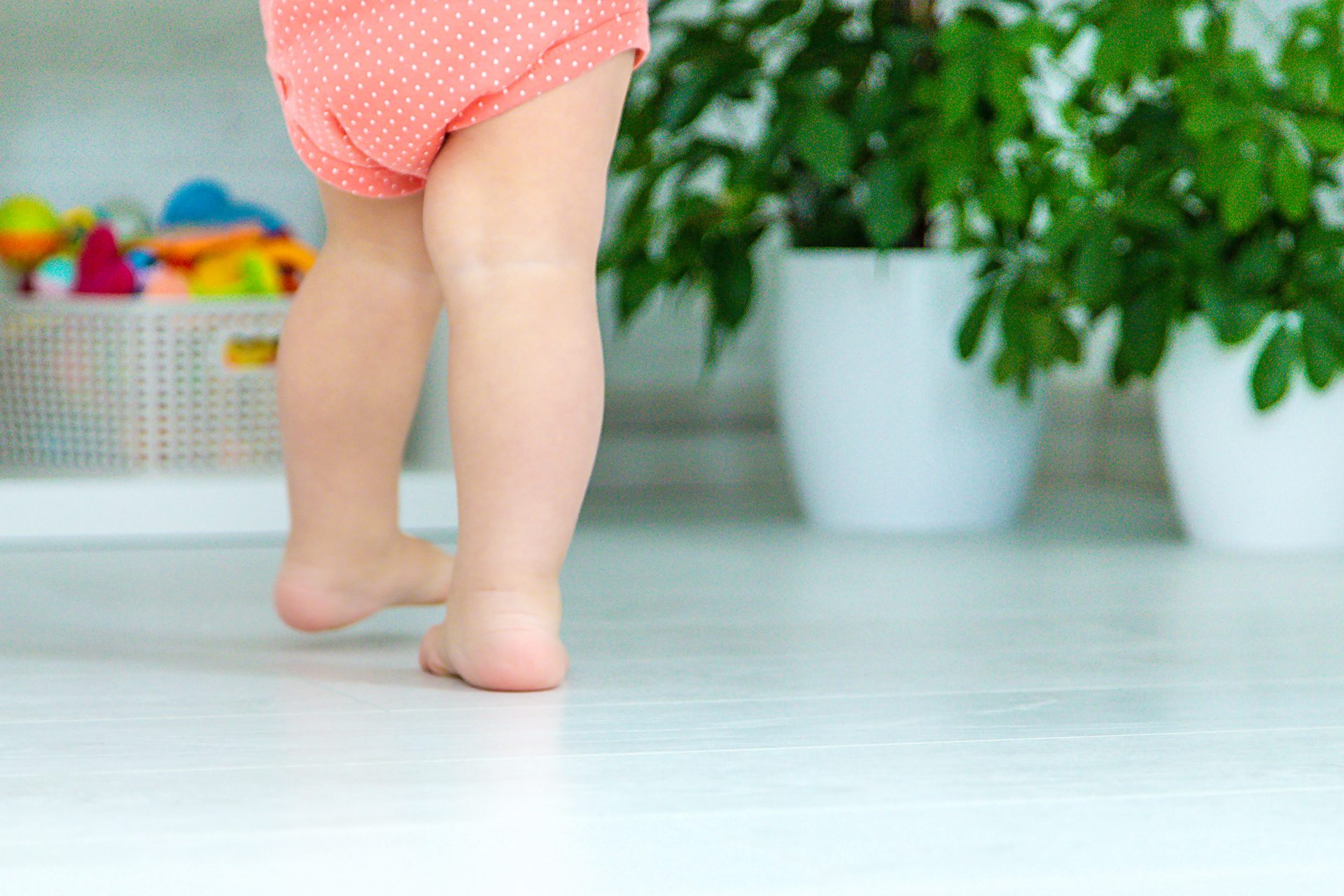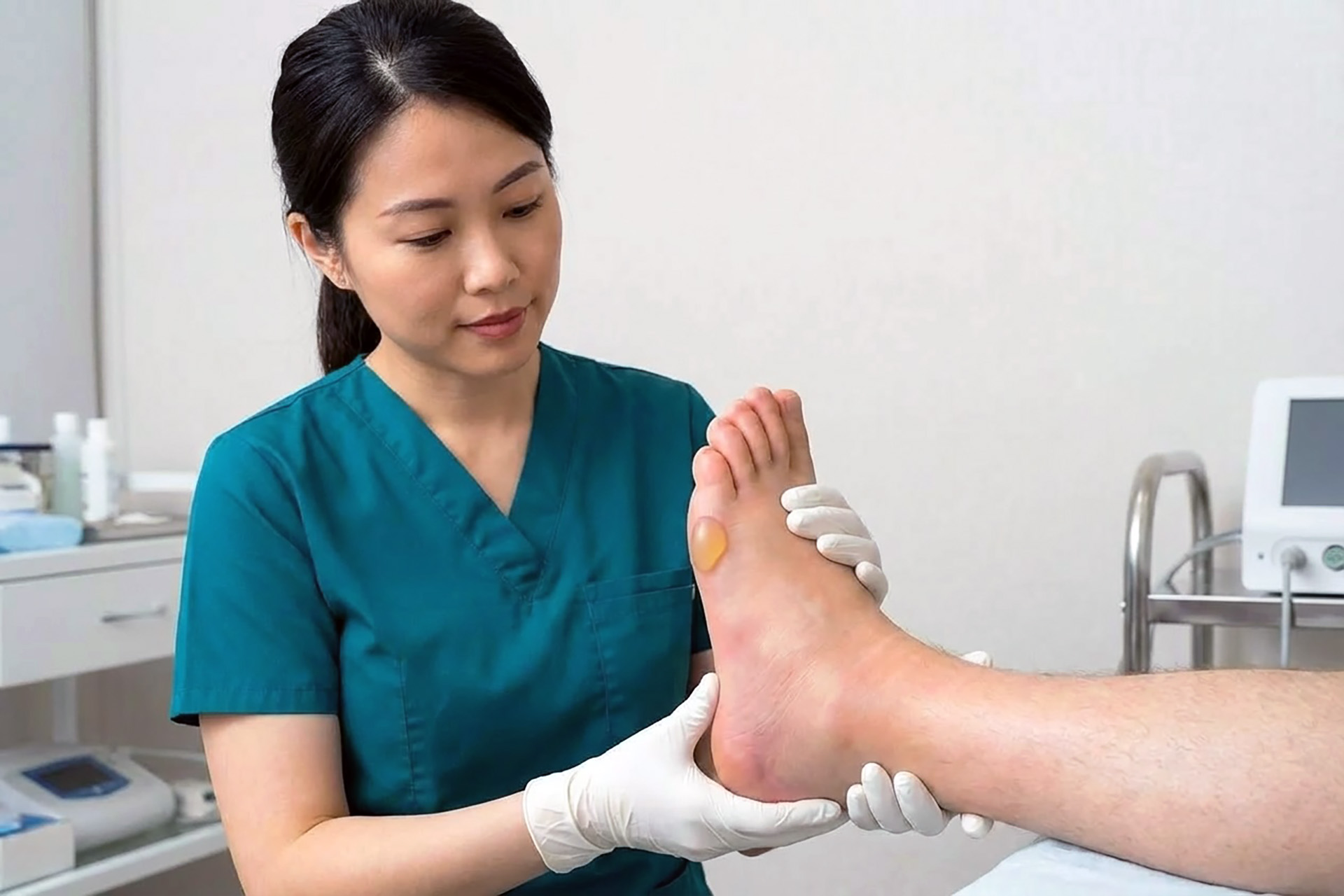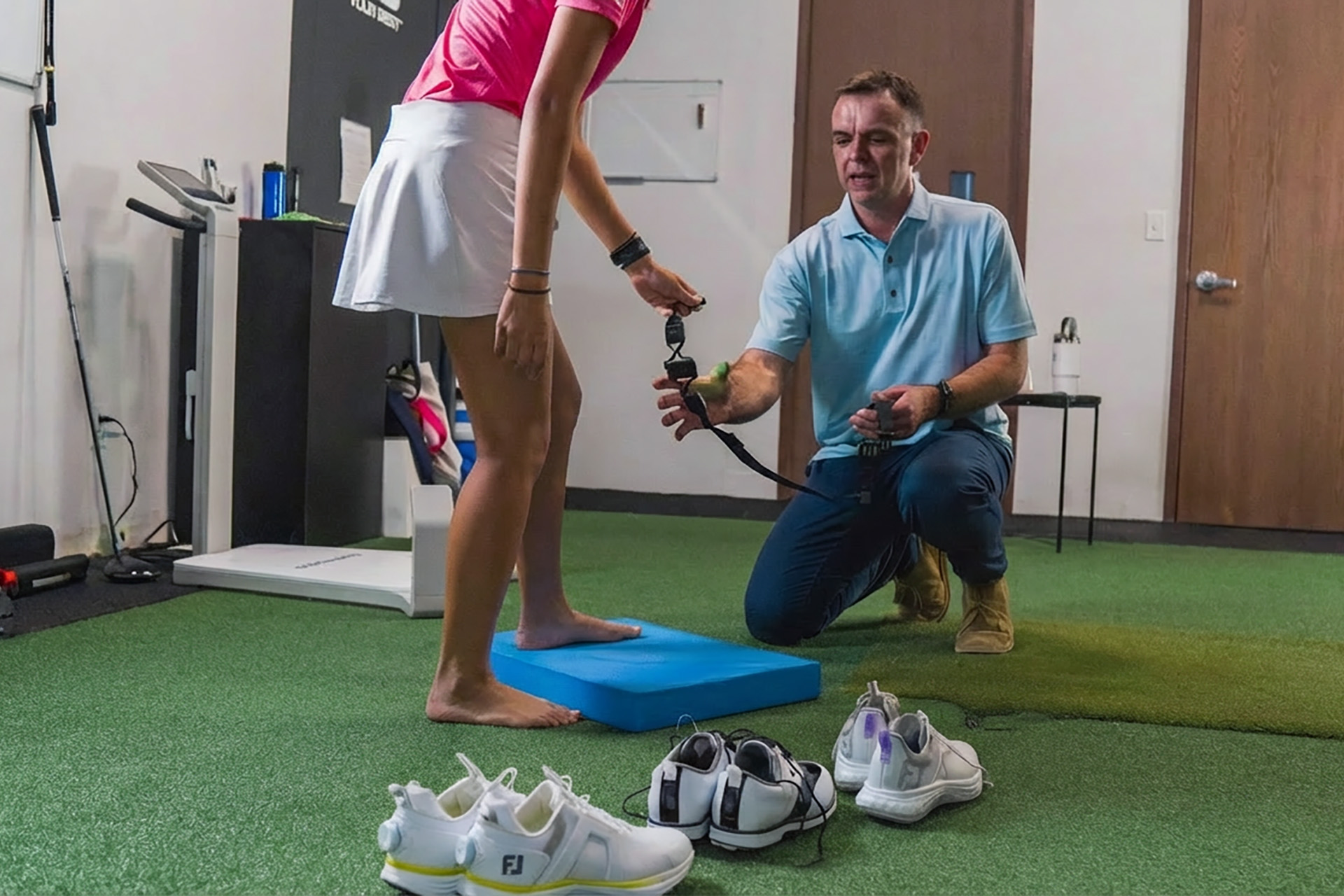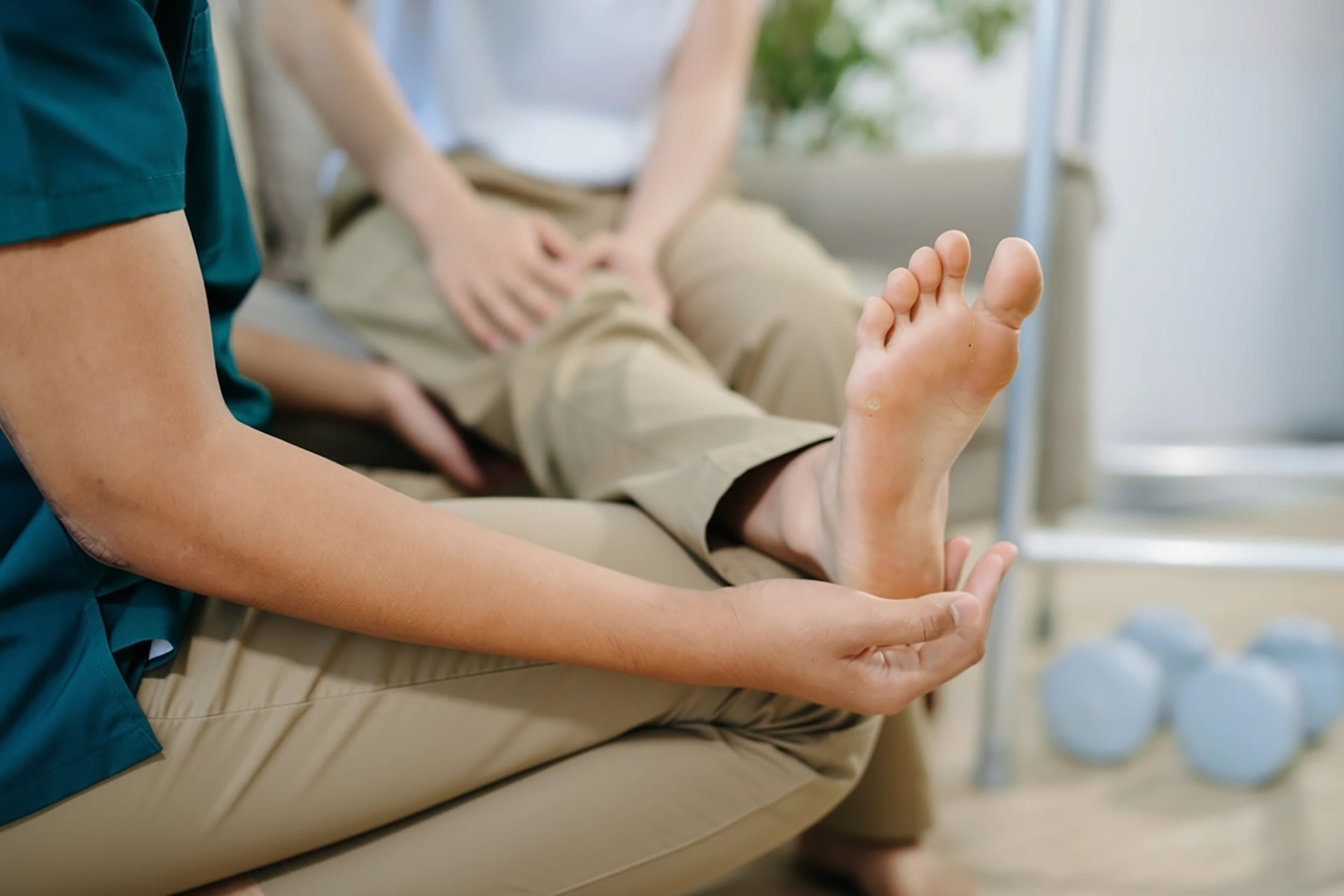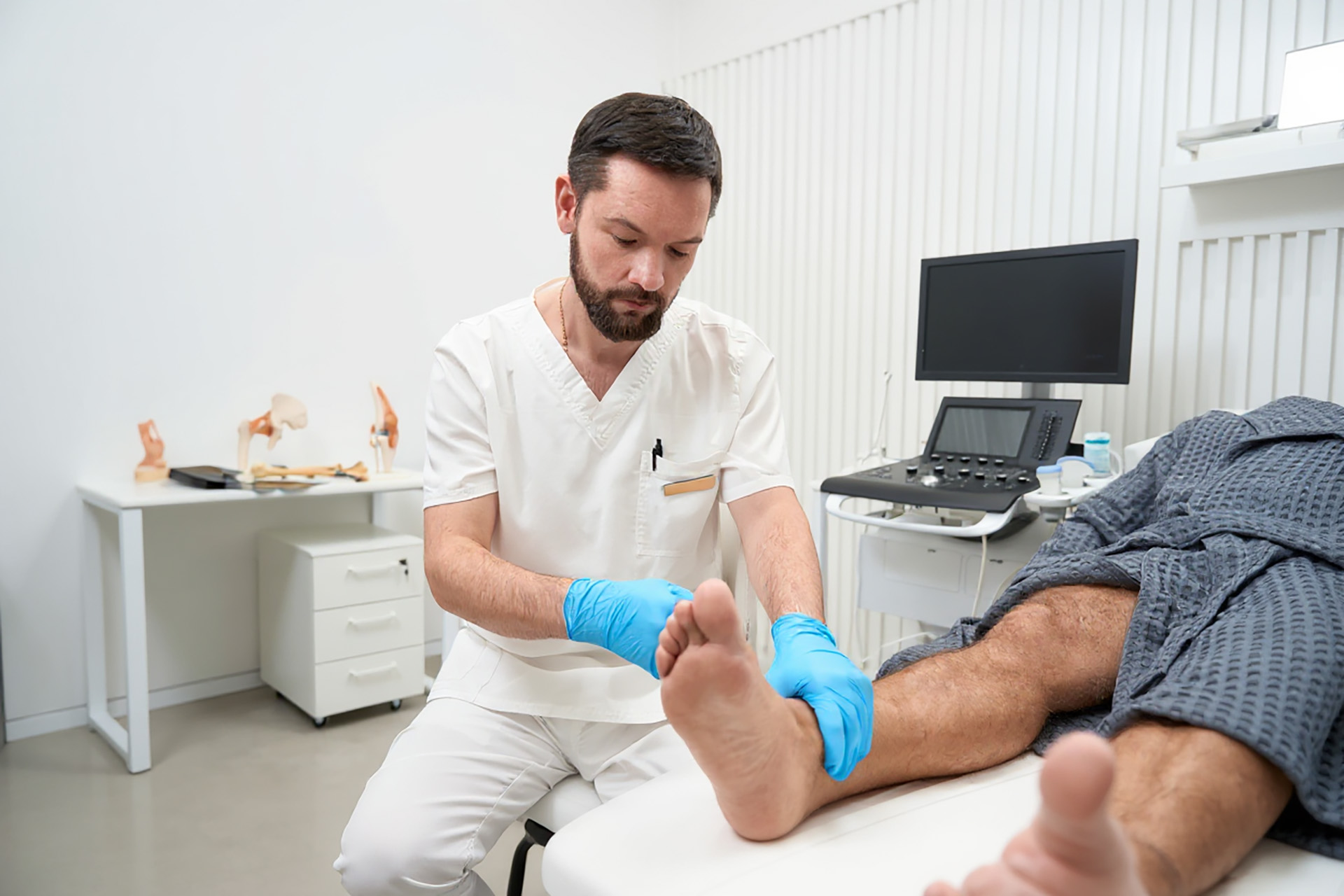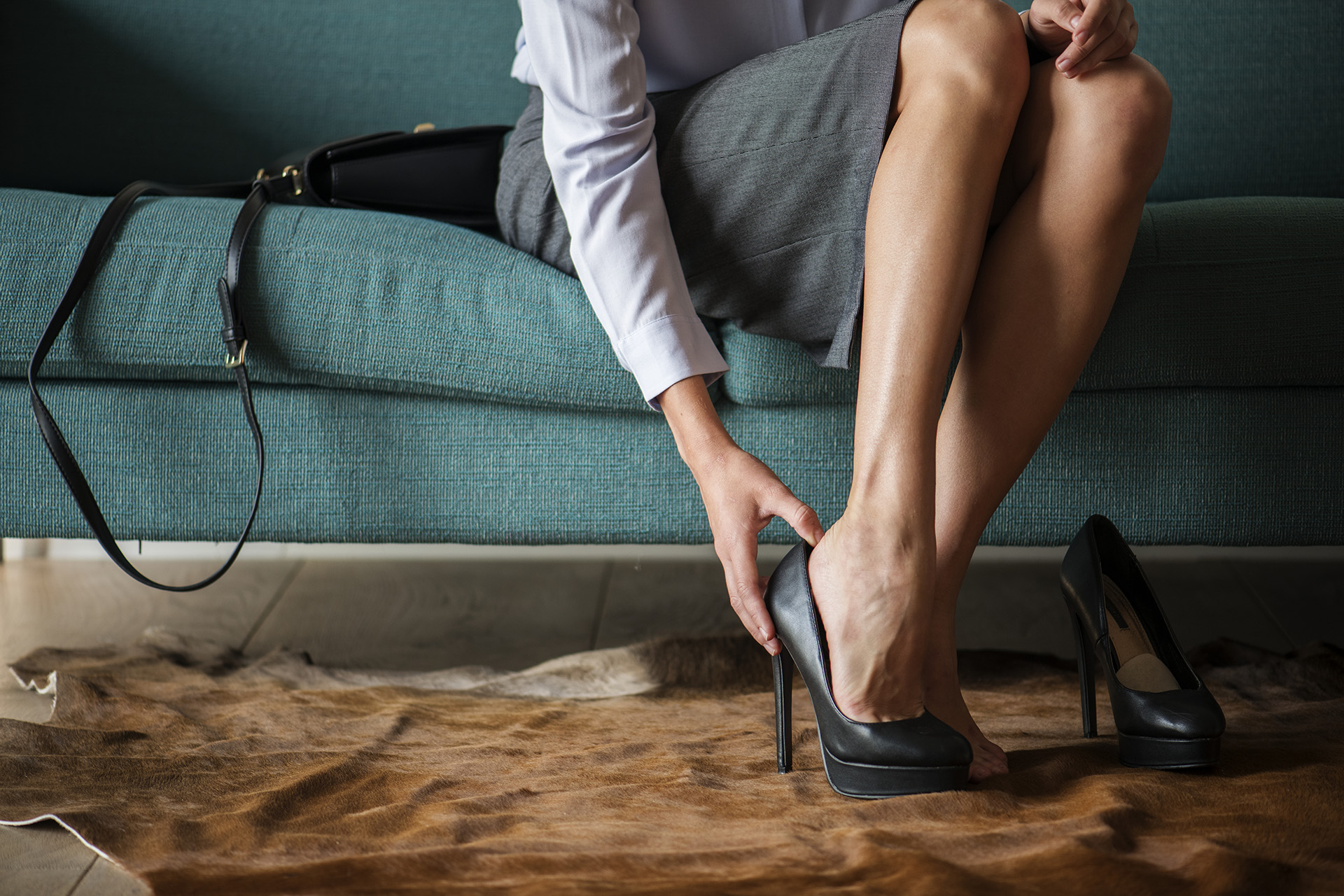Many children are born with inward pointing toes, but most grow out of it as their bodies develop. Even then, it’s normal for a baby to stumble into toddlerhood as they learn to walk, as their awkward movements may not be exclusively caused by intoeing.
It is easy to treat most cases of pigeon toe in kids, as little to no intervention is necessary. Parents will normally see improvements in their child’s condition, often caused by the shape and alignment of the thigh and shin bones, by the age of 8.
Diagnosing a child’s pigeon toe gait involves a biomechanical examination, gait observations or X-rays, when needed. The goal of diagnosis is to find the root cause to address the underlying issue to devise a plan to aid in normal childhood gait development.
Some structural problems of the leg and foot can cause abnormal gait patterns in children. Sometimes the problem is nothing more than muscle weaknesses that support the foot and ankle. Targeting the hip and lower limbs with strength-building exercises is all that’s required.
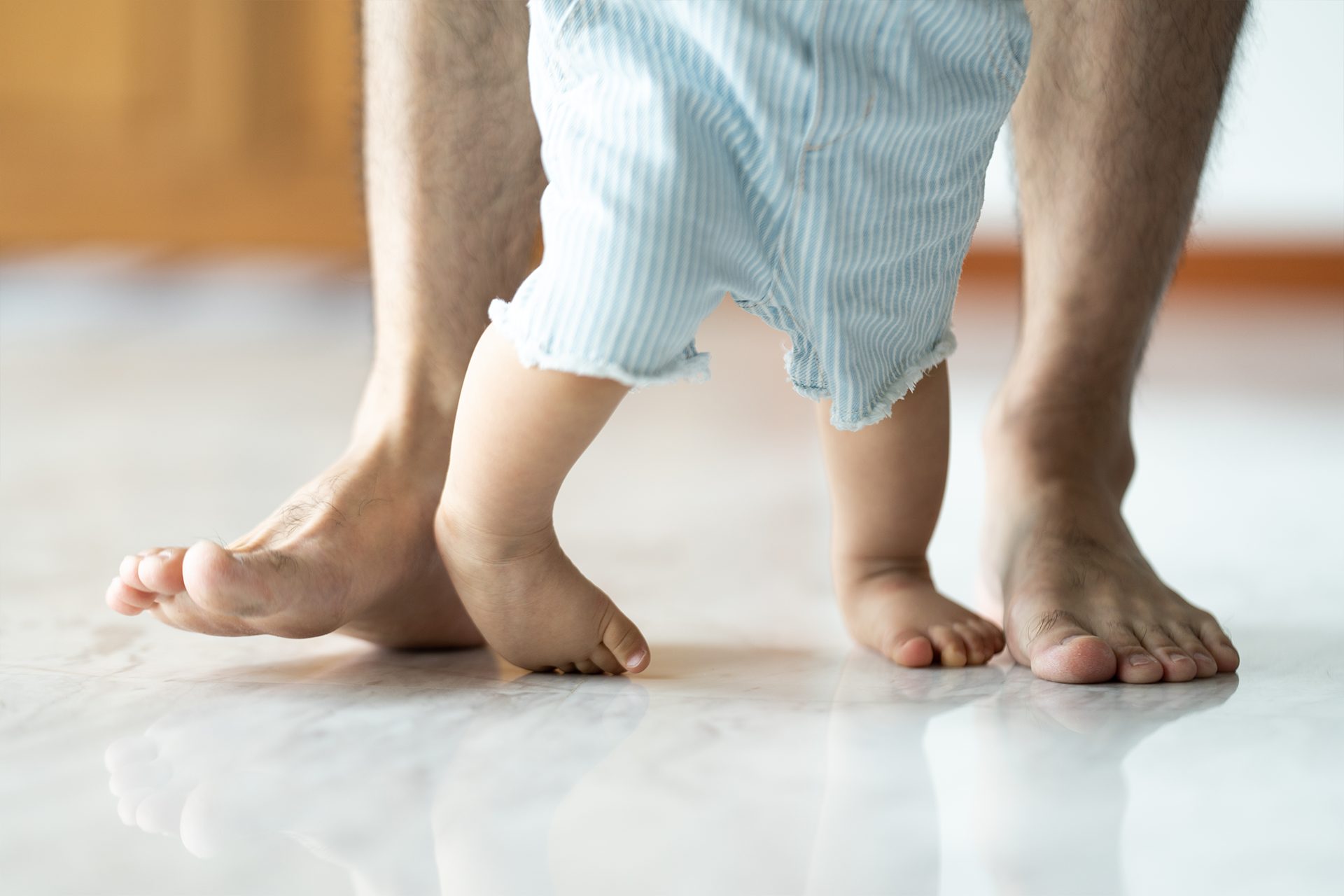
In the off chance that your child’s intoeing causes discomfort while moving, interventions to address the pain may include braces, cast or orthoses to correct foot function. In most cases, early-stage surgery is not suggested. Surgery to readjust the position of the bones should be the last resort if all conservative treatments fail.
What Causes Intoeing in Children
The three most common causes of intoeing in children include:
- Metatarsus adductus, which occurs in one in 1,000 births. The foot is rotated and curved inward like a kidney bean. In many cases, the foot remains flexible, and a gentle stretching regime can help the foot align correctly. In the most severe cases, our podiatrists may recommend a cast for your child to address the foot shape.
- Internal tibial torsion, usually noticeable when your child begins to walk, naturally starts to align and corrects itself by the age of 4. In rare cases where the condition remains unresolved and affects your child’s health, surgery can be considered after the age of 8.
- Increased femoral torsion, a condition where the hip rotates inwards, causing the rest of the leg to follow suit. Internal femoral torsion corrects itself 99 percent of the time as a child grows into their bodies. Like with all other cases, surgery should only be considered when the child is 8 to 10 years old, and if their walking is severely affected by the condition.
Healthy feet should point straight forward or slightly outward, by the time we become full-fledged adults. However, it’s fairly normal for infants and children to have their toes pointed inwards when walking or running.

Conservative podiatric therapies are oftentimes recommended to address intoeing in children. Activities such as sitting cross-legged or taking ballet classes could help improve your child’s pigeon-toed gait if it has become a habit from activities like sitting in the “W” position.
Many infants are born with a curved foot, which is referred to as the metatarsus adductus and gives the foot a ‘C’ shape. Pigeon-toed babies with rigid metatarsus adductus should have serial casting if it persists beyond six months of age. Fortunately, most children (87%) will naturally grow out of this condition by age 3. If the deformity is particularly severe, surgery may need to be performed after the age of 4.
Pigeon-toed in toddlers with internal tibial rotation, where the bone below the knee twists inwards, may require medical treatment in severe cases. The condition can cause their foot to turn inwards, but there is no actual deformity of the foot.
With age and practice walking, this should improve by 4 years old. Shoes for pigeon-toed toddlers should provide structure and support. Our podiatrists can help identify proper footwear through an assessment. In rare cases where the child is constantly falling or tripping, surgery may be recommended for the child’s safety and overall health as a last measure on how to correct pigeon toes in toddlers.
About 10 percent of children experience femoral anteversion when the bone between the hip and knee twists inward. This condition occurs more often in girls than boys, but most kids will eventually outgrow it by 8 to 10 years old as their gait patterns normalises.
How Does a Podiatrist Evaluate and Manage Intoeing in Children?
Our podiatrists accurately diagnose intoeing through a physical examination and torsional profile to determine the underlying cause of your child’s intoeing — whether it stems from the femur, tibia or foot, or a neurological disorder. From there, conservative interventions can be prescribed as first-line therapies, especially if your child is experiencing pain and discomfort during normal childhood activities like running or playing sports.
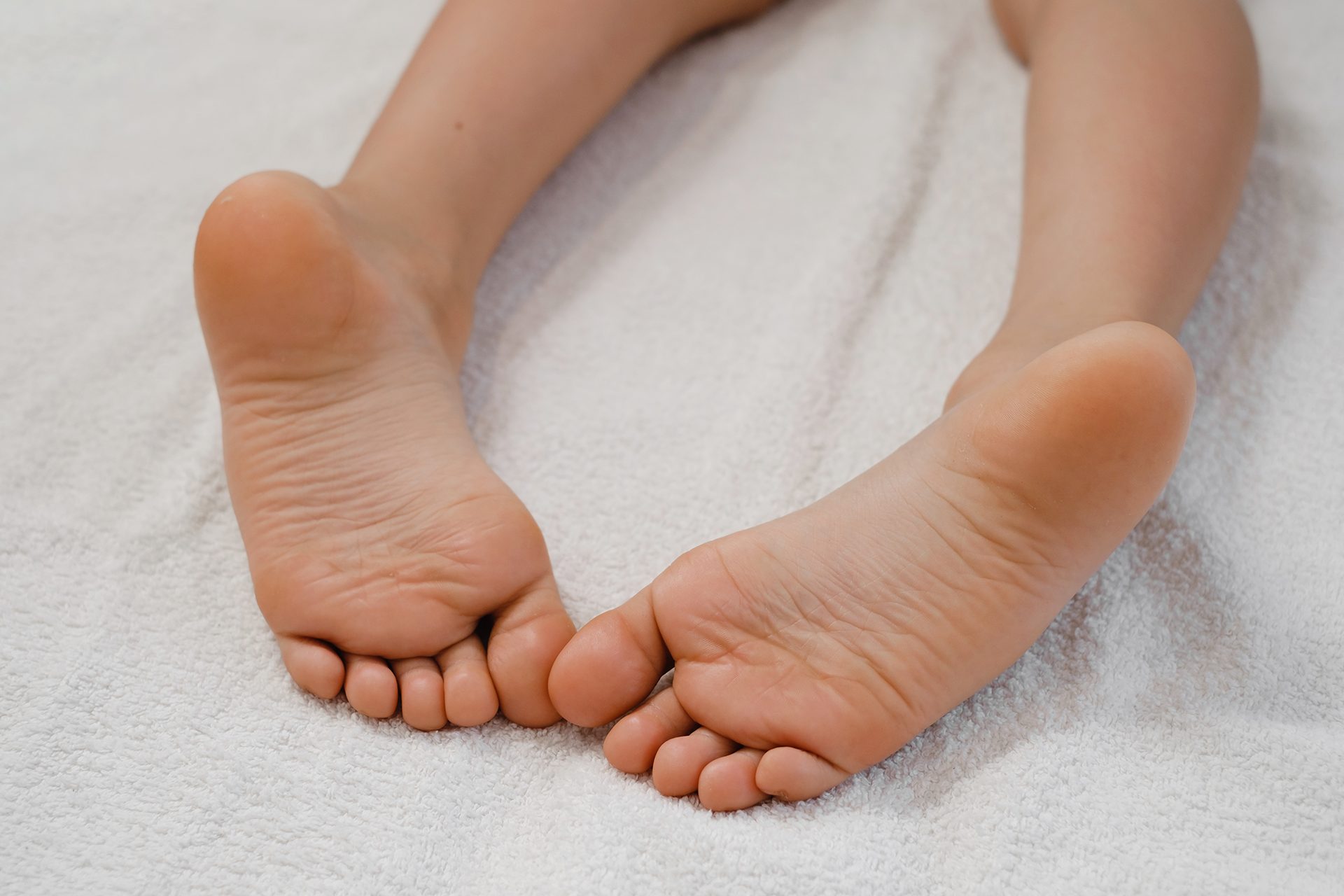
Very often, intoeing does not actually need to be managed and will be outgrown naturally over time. Parents have a tendency to blame recurring falls or clumsiness on intoeing, and believe it has to be corrected quickly.
It’s important to avoid at-home remedies or non-prescribed therapies such as corrective shoes, twister cables, daytime bracing, exercises, shoe inserts or back manipulations as these may adversely affect your child’s normal body development.
Paediatric orthoses can be prescribed to assist your child with walking and running. However, they are often unnecessary as the bone rotation usually improves naturally.
When pronounced deformities impact the quality of life, our podiatrists may refer your child to an orthopaedic surgeon for further evaluation. Our team will then work in tandem with your child’s surgical post-op rehabilitation plan to prevent any future injuries.
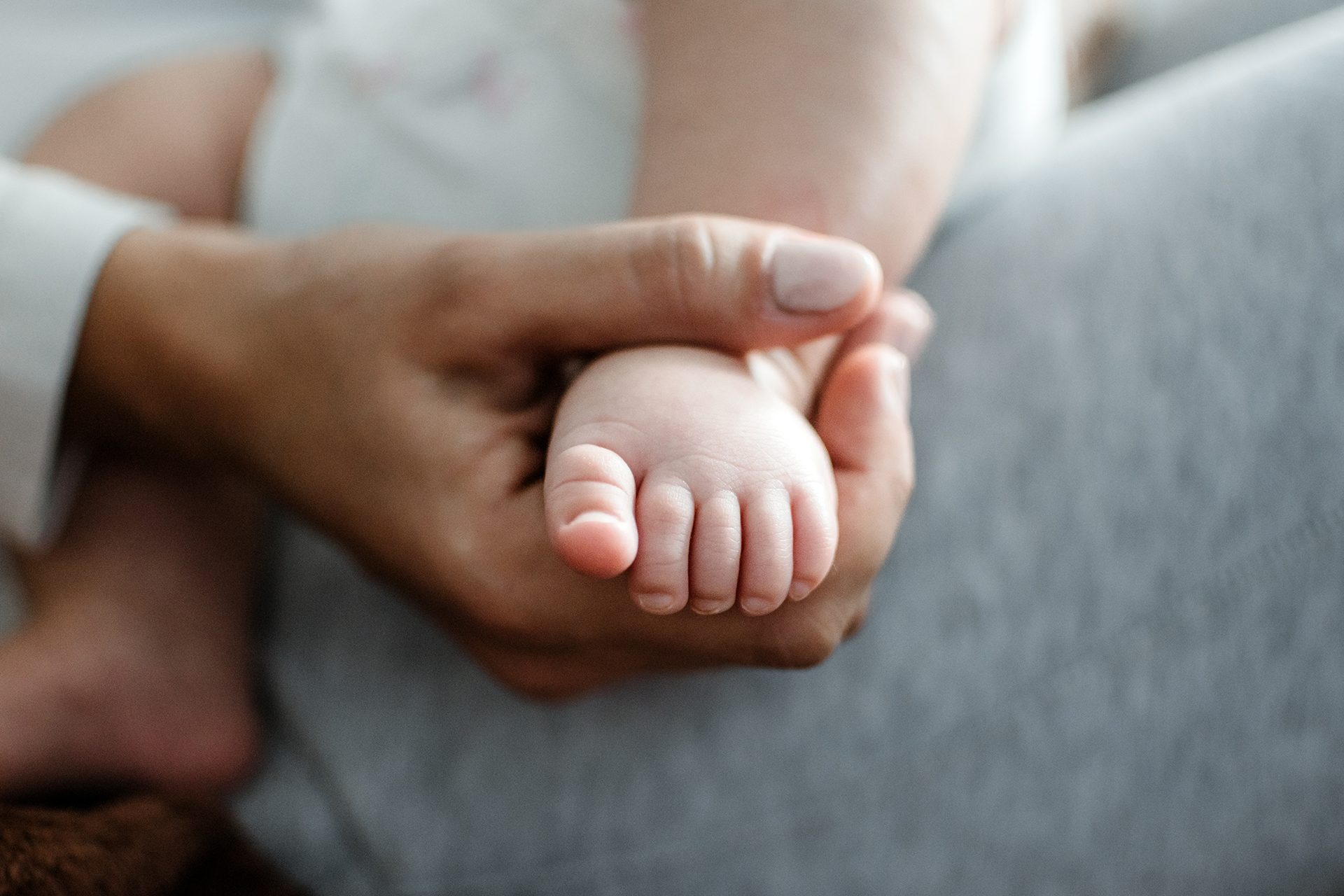
Importance of a Child’s Foot Care in Overall Health
Intoeing may present some early challenges for you and your child. At The Foot Practice, we strive to recognise your child’s individual needs and desired outcomes. Our goal is to create an effective and personalised clinical foot care plan for your child to live a normal, active and healthy life without any limitations, especially if they participate in competitive sports.
Even if most cases of intoeing in children resolve with time, your child’s foot health is part of their overall wellbeing as the foot is the gateway to the rest of the body when it comes to daily movement. Other imbalances or dysfunctions might be at play beyond inteoing that are causing problems or deformities leading to imbalance mobility.
If your child’s condition seems to be growing worse over time, or if they are experiencing pain in their lower limbs, make an appointment at our leading paediatric podiatry clinic so we can build a proper treatment for a pigeon-toed child.
What sets The Foot Practice apart from other clinics is our dedication to providing you and your child with the education you need to make properly-informed decisions regarding your child’s overall foot health. Regardless of what your child’s foot and ankle trouble may be, The Foot Practice will help your child put their best foot forward.

